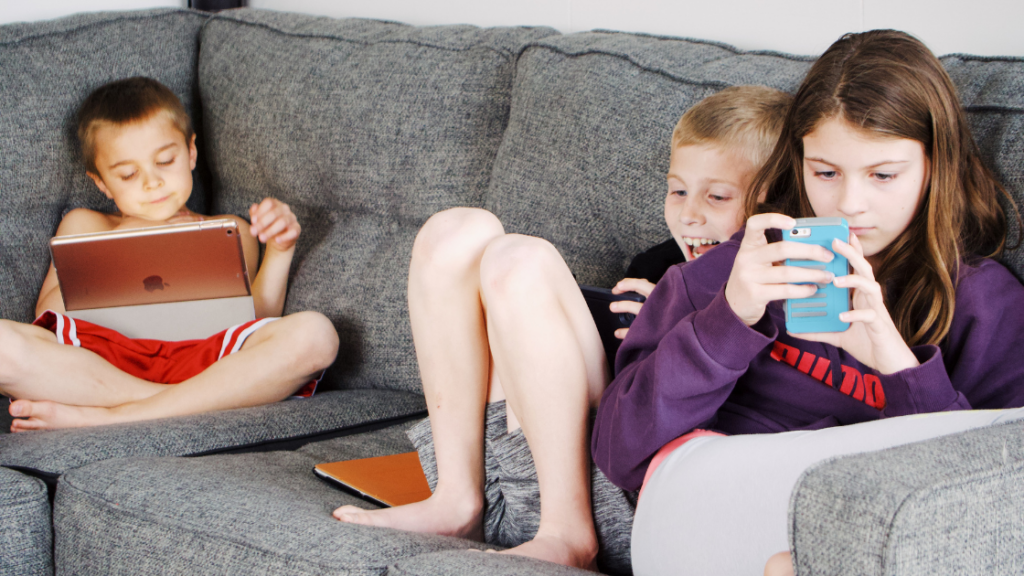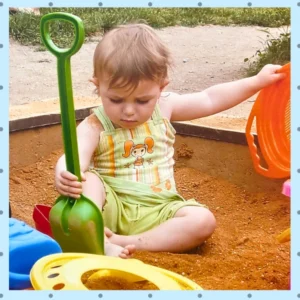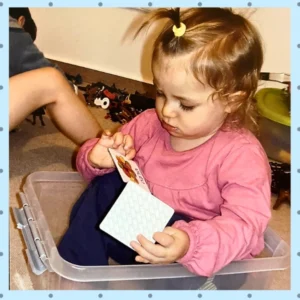The Impact of Screens on Child’s Development and Creativity

What does the rise of screens have to do with weakening our creativity?
Creativity is the ability to see things from a new and different perspective. It’s the capacity to connect existing, known data and create something new that didn’t exist before and serves a practical purpose.
Developing the creative part of the human brain is one of the most important assets for advancing the world. After all, how would life look if there weren’t minds that see beyond what the eye can see? Minds that develop new ideas out of nothing invent life-changing innovations and improve our quality of life.
Living in a changing world
Research on bees has shown that electromagnetic radiation from cellular antennas can impair their navigation, affect their health and immune system, and disrupt their role as pollinators, thereby interfering with natural, systemic processes in nature.
Unlike bees, humans can choose where to set boundaries, what to take, and how to develop through knowledge, awareness, and proper action. We can neutralize the adverse effects of introducing screens into our lives—on a personal, physical, emotional, social, and mental level—and benefit from the best of both worlds. We can enjoy the natural gifts and developmental tools nature has given us while also benefiting from technological advancements, which are the product of high-level creative thinking.
Do Infants Gain Any Benefit From Screens?
Behind every action a person chooses to take, there are intelligent questions that make the choice more suitable:
Does this action serve me?
How does it serve me?
To what extent does it serve me?
This also applies to the role of screens in the lives of babies and children. Is the content they are watching aligned with their developmental needs? Does the amount of time they spend in front of screens benefit them?
If you were to ask Professor Yoram Yovell, a clinical psychiatrist and brain researcher, what he thinks about the benefits of exposing infants to screens, even programs explicitly designed for them, his answer would be zero benefits.



The early childhood years are critical for comprehensive development. During these years, the nervous system lays down its broad and intricate foundation through the infant’s active engagement. By exploring the environment, engaging in experiential and repetitive actions, using signals from the sensory system, and matching stimuli to the current level of nervous system development, motor, cognitive, social, and emotional skills are acquired step by step. A broad understanding of the world develops, and essential life skills are gained.
Why Screens Fail to Promote Early Childhood Skills
Brain research conducted on babies shows that watching or, more precisely, staring at screens before the age of 18 months does not benefit the infant’s development in any way. The neural foundation that connects what the eyes see with the brain’s ability to translate that data into action has not yet been developed.
Even if a show slowly and repetitively demonstrates age-appropriate actions—like stacking blocks, fitting one block inside another, or threading rings—a baby staring at the screen cannot translate what they see into action in real life. The brain hasn’t yet developed the capability to connect the two.
Mental Muscles: How Play Strengthens Creativity

Every baby comes into the world with the instinct and passion to examine and explore its surroundings. The ability to imagine emerges as the brain develops and the baby accumulates enough concepts and understandings about the world.
Play is a powerful tool through which infants, toddlers, and children learn about the world. The “muscles” of play, curiosity, and exploration are mental muscles, and like any other muscle in the body, they remain stronger the more they are used. On the other hand, if we don’t engage these mental muscles, they get dormant and weaken over time.

Cultivating creativity from early childhood involves creating an environment that allows young children to move freely but safely in open-ended play and multi-sensory experiences. This includes exposure to different materials and objects and the opportunity to independently experiment with them in an age-appropriate environment.
This is the ultimate way to allow infants’ creative brains to thrive.
The Negative Impact of Screen Time on Creativity
Extended screen time can harm and diminish a child’s natural connection to experiential and free play, during which creativity and the use of imagination flourish. We often encounter shelves full of toys, yet children don’t always engage with them. Sometimes, they even complain of boredom, saying they have nothing to do.
The habit of being in a screen-dominated environment disrupts the place where exploration, imagination, associative thinking, and the desire to animate inanimate objects merge with great power.
Therefore, controlled exposure to screens and setting limits are necessary if we want children who choose on their own to spend extended periods away from screens.
Ways to Foster Creative Thinking and Imagination from Early Childhood

The confusion that exists among parents today is understandable. The world has been filled with new and attractive products that seem to match the development of the modern child and are even needed to raise children well adapted to the changing era.
However, human evolution can never keep pace with technological progress. Environmental factors that supported the development of babies and children 100 years ago are still wonderfully adapted to their developmental needs today. Past games’ simplicity and fundamental nature continue to comprehensively support children’s physical and emotional needs, even in today’s modern era.
Therefore, the most basic, unrefined stimuli of the past—such as nature and its many treasures, playing with various materials, walking on textured surfaces, or exposure to different types of physical activity—continue to do an excellent job promoting body and brain development.
How to Create a Screen-Free Play Environment in Early Childhood
When my three children were young, I carefully created an environment that encouraged them to explore naturally and stay engaged without external interference. I enjoyed searching for non-electronic toys and games that would stimulate them to explore and experiment with different skills. I sought games that enhanced cognition, developed motor skills, and engaged the multisensory system.
I provided them with games that encouraged open-ended play and nurtured their imagination. I also included different types of balls of various sizes and shapes, each offering unique possibilities for play and practicing the most basic ball skills, such as throwing and catching, rolling, and bouncing, as well as skills such as power regulation, balance, coordination, speed, agility, and time reaction.




Creating an exploratory space that doesn’t overwhelm but gradually exposes children to a rich and wide range of materials and tools allows the mind to enter the realm of imagination and become deeply engaged in developmentally supportive activities for an extended period. These activities harmonize with the body’s needs, fill the soul with joy, and truly embrace the essence of childhood!
